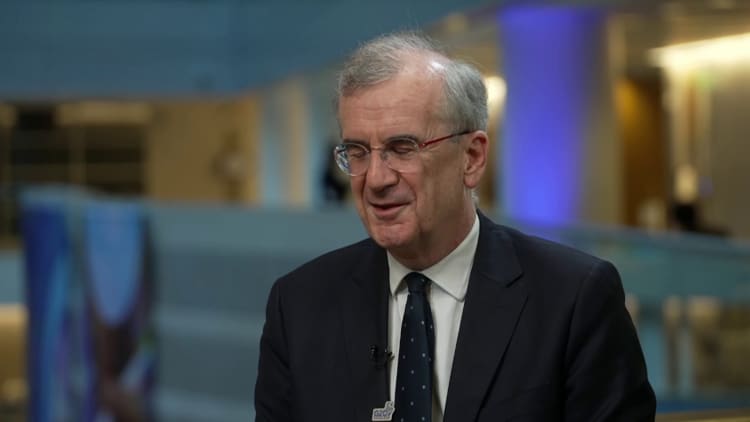
Two key European Central Bank figures on Monday threw their weight behind the prospect of an interest rate cut next week, indicating that it is practically a done deal.
In a speech on Monday, Olli Rehn, ECB governing council member and head of Finland’s central bank, stressed that inflation in the euro area was falling in a “sustained way.”
Inflation in the euro area held steady at 2.4% in April, marking the seventh straight month it has been below 3%, despite a slight rebound in December. The figures for May are due on Friday.
“Thanks to this disinflationary process, inflation is converging to our 2% target in a sustained way, and the time is thus ripe in June to ease the monetary policy stance and start cutting rates,” Rehn said in a speech published on the website of the Finnish central bank.
“This obviously assumes that the disinflationary trend will continue and there will be no further setbacks in the geopolitical situation and energy prices.”

Meanwhile, the ECB’s Chief Economist Philip Lane said in an interview with the Financial Times, “Barring major surprises, at this point in time there is enough in what we see to remove the top level of restriction.”
The comments come ahead of the central bank’s next meeting on June 6. Markets are now indicating a very high chance of a quarter-percentage-point cut to the ECB’s main rate, from 4% currently.
The comments from Rehn and Lane on Monday follow a slew of similar sentiments from other ECB members.
It indicates that the European Central Bank is likely to move sooner than the U.S. Federal Reserve, which usually leads the way in monetary policy decisions.
“The Fed and the ECB look set to decouple, with an ECB cut likely in June while bracing for high-for-longer in the U.S.,” Bank of America economists led by Claudio Irigoyen said in a note Friday.
Debate over when the Fed is likely to start reducing rates is rife in the U.S. Last week, a number of strong economic and labor data releases saw Goldman Sachs push its forecast for the Fed’s cut back to September from July.
Meanwhile, minutes from the Fed’s April 30 to May 1 policy meeting pointed to uncertainty among policymakers over the right time to ease.
Bank of America’s Irigoyen said that recent “Fedspeak” and minutes indicate that rate cuts in the U.S. are off the table for now.
“We think that ECB and Fed rate cut cycles will differ, a lot,” he concluded.
— CNBC’s Jenni Reid and Brian Evans contributed to this report.




